toh
Our History
Our History
1800
1845
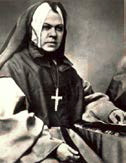
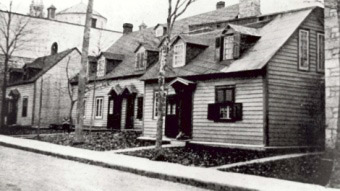
The building for the General Hospital is purchased for $240, run by Elisabeth Bruyère.
1847
- Typhus epidemic strikes Ottawa.
- General hospital expands.
1850
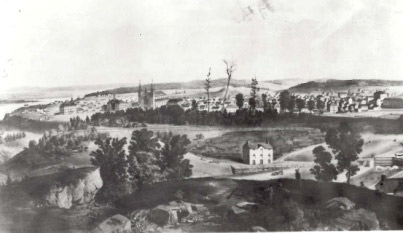
Bishop Guigues purchases building where the General Hospital is moved for the sisters to help a bigger population.
1862 – 1866
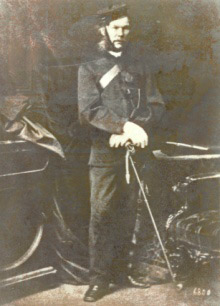
First Doctor
- General Hospital moves to new site: Water and Sussex.
- First surgical operation is performed at the hospital.
1876
Elisabeth Bruyère passes away.
1897
General Hospital begins to accept interns.
1900
1902
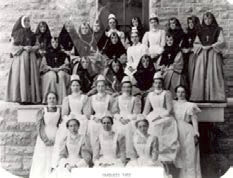
First class of nurses from D’Youville School graduates.
1918
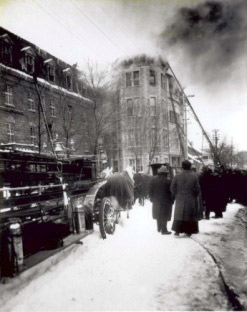
- Spanish flu epidemic hits Ottawa.
- Major fire damages General Hospital.
1922
Grace Hospital is built on Wellington St.
1924
Civic Hospital opens officially.
1925
May Court Library is established.
1926
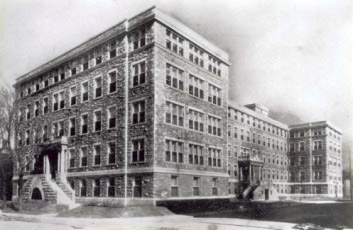
D’Youville School becomes affiliated with RNs of Ontario.
1933
D’Youville School becomes affiliated with University of Ottawa.
1943
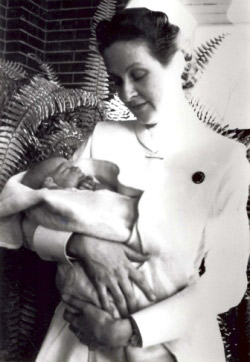
Princess Margriet is born at Civic Hospital.
1947
Clinical teaching program at General Hospital is setup by University of Ottawa.
1950’s
General Hospital is the first to be affiliated with the University of Ottawa School of Medicine.
1957
First autologous human bone marrow in Canada is administered in Canada at General Hospital.
1967
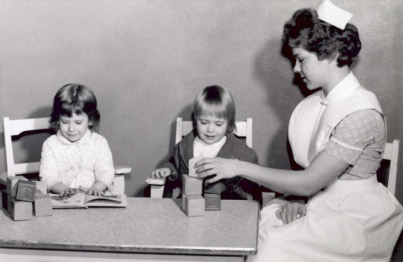
- Riverside Hospital opens.
- First synovectomy in Canada in a severe hemophiliac takes place at General Hospital.
1975
First CT scan is performed in Eastern Ontario.
1976
First self-financing drug information service in North America is developed at General Hospital.
1978
General Hospital is the first hospital in Canada to offer pharmacy-based clinical toxicology consulting service.
1980

- General Hospital moves to current site on Smyth Rd.
- General Hospital is the first hospital in Canada to offer drug information residency program.
- $5.3-million film “Threshold” starring Donald Sutherland is filmed at General Hospital.
1981
- General Hospital performs the first bone marrow transplant in region between related donors.
- General Hospital nephrology research team develops the first night time peritoneal dialysis exchange system.
1982
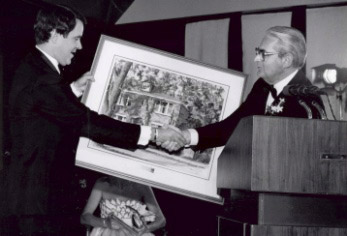

- Rich Little Special Care Nursery opens at Civic Hospital.
- Frank Sinatra and Rich Little perform raising $967,071 for the Special Care Nursery in one night.
1984
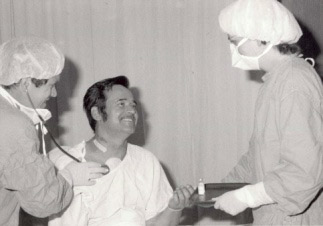
Jean-Guy Villeneuve receives Ottawa’s first heart transplant at the University of Ottawa Heart Institute.
1985
The General Hospital is the first hospital in North America to go smoke free.
1986
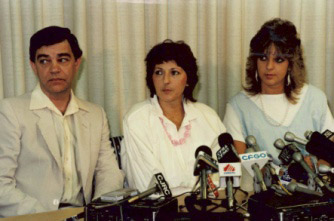
Noëlla Leclair receives Canada’s first Jarvik-7 artificial heart at General Hospital.
1987
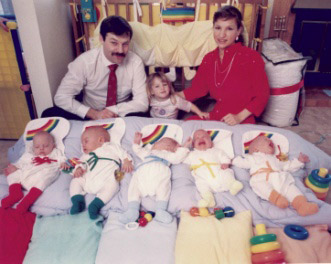
The first set of quintuplets born at The General Hospital.
1988
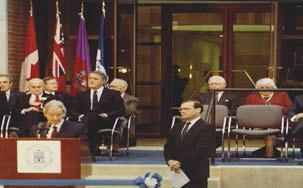
Grand opening with Prime Minister Brian Mulroney in attendance.
- First bone marrow transplant in Canada between unrelated donors is performed at the General Hospital.
- Loeb Research Institute is founded at Civic Hospital by Dr. J. David Grimes, with donations from the Loeb family.
1989
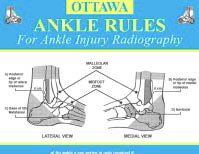
- Weight Management Clinic is established.
- University of Ottawa Eye Institute opens at General Hospital.
- Dr. Ian Stiell develops world-renowned Ottawa Ankle Rules for emergency physicians.
1992
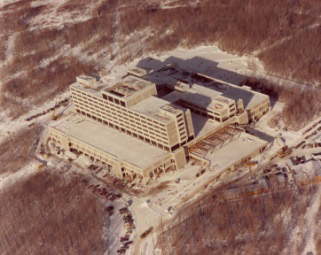
General Hospital is chosen as region’s lead Trauma centre.
1995
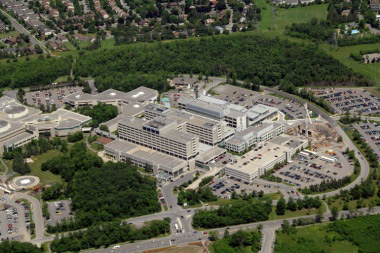
150th anniversary of General Hospital.
1996
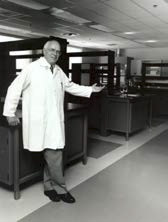
Dr. Ronald Worton in the new OGHRI facilities on 4th floor of cancer centre at General
Ottawa General Hospital Research Institute is founded by Dr. Ronald Worton.
1997
The Ottawa Hospital Breast Health Centre is established at the General Hospital.
Amalgamation: The Ottawa Hospital
1998
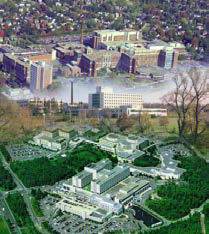
Riverside, Civic and General hospitals join to form The Ottawa Hospital.
2000
Kidney Research Centre is established.
2001

The Ottawa Health Research Institute (OHRI) is created in partnership with uOttawa to unite all research activities at The Ottawa Hospital.
2004
The Ottawa Regional Cancer Centre becomes The Ottawa Hospital Cancer Centre.
2004-2005

- Shirley E. Greenberg Women’s Health Centre is established.
- The Ottawa Hospital becomes first hospital in North America to implement multi-facility surgical instrument management system “Alex Gold”.
2005
- The Ottawa Hospital opens satellite clinic to provide pre- and postnatal care to adolescents in partnership with St. Mary’s Home.
- Centre for Patient Safety is established.
- The Rehabilitation Centre becomes part of The Ottawa Hospital.
2006
Sprott Centre for Stem Cell Research opens with largest single donation in The Ottawa Hospital history made by Eric Sprott and his wife Vizma.
2007

OHRI’s Dr. Michael Rudnicki discovers stem cells in adult muscle.
2008
- The Ottawa Hospital celebrates its 10th anniversary.
- Results from clinical trial by Drs. Dean Fergusson and Paul Hébert change heart surgery around world.
2009
- Grand opening of the expansion to The Ottawa Hospital Cancer Centre at the General Campus.
- OHRI becomes the Ottawa Hospital Research Institute, highlighting its relationship with The Ottawa Hospital.
2010
-
- The Ottawa Hospital launches CyberKnife, a robotic radio surgery system.
- The Ottawa Hospital signs on to participate in Partners for Life program with Canadian Blood Services.
- University of Ottawa Skills and Simulation Centre
opens.
2011
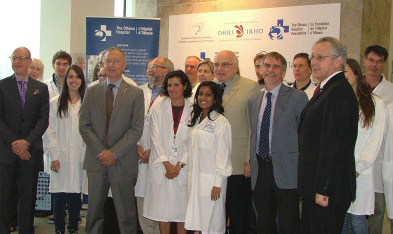
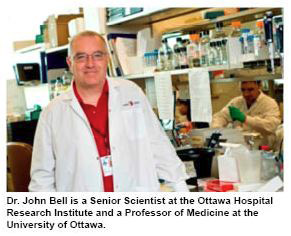
- Centre for Innovative Cancer Research opens.
- Centre for Practice-Changing Research opens.
- New PAU unit opens.
2011-2012
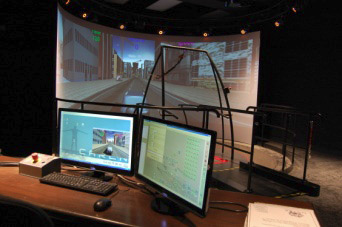
- Virtual Reality Rehabilitation Lab opens.
- First surgery is performed with new Da Vinci robot.
- Ottawa Blood Disease Centre opens.
- First health-care facility in Ontario to offer sign languages on website.
Elisabeth Bruyère
Elisabeth Bruyère (Bruguier) was born March 19th, 1818. Elisabeth received training of the highest quality from religious views to education. She taught at a local school, and was later transferred by her benefactor in 1836 to Saint-Vincent-de-Paul in Laval, Quebec.
Elisabeth joined the Sisters of Charity of the General Hospital, Montreal, in 1839. She was in charge of teaching a group of 40 orphans what she had learned from her cousin, Abbé Charles-Francois, the priest of Saint-Esprit.
In 1844, The Sisters of Charity were asked if they could relocate and move to Bytown (Ottawa), an industrial timber community that had no schools or hospitals to help the people. They accepted. Mother Marguerite-Dorothée Beaubien was the leader at the time, but when she passed away, Elisabeth was asked to take charge. Although she was only 27 years old and had the community’s weight on her shoulders, Elisabeth proceeded to accept the difficult mission and succeeded beyond everyone’s expectations, including her own.
Elisabeth opened one of the first “bilingual” schools, as well as the first hospital consisting of seven small beds. In 1847, the typhus epidemic exploded. Thanks to the sisters roughly 475 lives were saved and several orphans were cared for.
By the time Elisabeth passed away in 1876 she had opened 25 homes throughout Ottawa, Quebec and New York State, all under her control. The 27 year old sister was a key element in the history of Bytown and surpassed all expectations of her abilities to ensure wellness and education in a small industrial city.
Source: Dictionary of Canadian Biography Online
Ottawa General Hospital 1845-1980
May Court Library
Established in 1925, the library service includes lending books and magazines to patients, sorting and distributing magazines to all waiting areas of the hospital and lending recorded books and music to patients on the recommendation of hospital staff.
Volunteers visit all the wards once a week offering books and magazines to patients. The honour system is used and patients are asked to simply leave the materials they’ve borrowed for the volunteers to pick up at a later visit. Mobile patients and staff are also welcome to visit the library in person to sign out books.
All materials are donated or purchased with money raised through books sales. Each year The Ottawa Hospital Civic Auxiliary makes a donation to enable new recorded books or equipment to be purchased.
Princess Margriet
On January 19, 1943, Princess Margriet was the first royal baby born in North America. The room at the Civic Campus was declared extra-territorial land to ensure that Princess Margriet would have full exclusive Dutch citizenship. Princess Margriet was named after the flower worn during the war to symbolize defiance to Nazi Germany. After Germany invaded the Netherlands, Princess Juliana and Prince Bernhard were forced to flee the Netherlands and come to Ottawa with their two young daughters. Two and a half years later, Princess Juliana gave birth to her third child, Margriet. The family lived in a quaint house on Acacia Ave in Rockliffe where they stayed until the Netherlands was liberated in 1945. The royal family returned to their original home in Baarn, in the Soestdijk palace where they lived before the invasion.
Princess Margriet had a passion for art, literature, law and history, studying abroad until later returning to the Netherlands where she met her future husband, Pieter van Vollenhoven. They started a family and have four sons: Prince Maurits, born in 1968, Prince Bernhard, born in 1969, Prince Pieter-Christiaan, born in 1972 and Prince Floris, born in 1975.
Princess Margriet is involved in various organizations, and she thrives in social work and health care. She continues to do a great deal of charity work and loves to read, ski, skate and go to the theatre in her spare time.
Princess Margriet travelled to Ottawa on May 11, 2002 to unveil a commemorative plaque in the delivery ward. Princess Juliana still arranges for 15,000-20,000 tulip bulbs to be sent to Ottawa from the Netherlands ever year for the Tulip festival because she was so pleased that the Federal District Commission planted the initial 100,000 bulbs given around the parliament buildings. The family is very appreciative for the role that the Canadians played in the birth of Princess Margriet.
Sources:
Veterans Affairs Canada
Wikipedia
The Ottawa Citizen
Rich Little Special Care Nursery
The Rich Little Special Care Nursery was established in 1982, thanks to the support of Rich Little and his friend Frank Sinatra who helped raise over $967,071 in one night by performing at a concert held at the Civic Hospital.
As one of three neonatal units in the region, the Rich Little Special Care Nursery provides enhanced level II care for premature infants who have reached 32 to 37 weeks gestation, and for term infants with health problems. With over 600 admissions per year, the Special Care Nursery is known for its family-centered developmental care services.
Rich Little’s continued interest over the years includes regular visits to the Special Care Nursery when he comes to Ottawa. He is also actively involved in many fundraising activities in support of the Special Care Nursery.
The care and nurturing of newborn infants has long been a tradition at The Ottawa Hospital’s Civic Campus, starting when the Ottawa Civic Hospital first opened in 1924. Since that time the Special Care Nursery has grown into a state-of-the-art neonatal unit offering exceptional family-centered care, leading-edge research and opportunities for medical education and training.
Noëlla Leclair, Canada’s First Jarvik Heart Implant Patient
In 1986, 41 year old Noëlla Leclair was living in Orleans with her husband when she suffered a series of heart attacks in four days. Noëlla’s only chance at life was a rare procedure that had only been done in the United States, where Doctors used an artificial heart until a donor heart became available.
The surgery took place at the University of Ottawa Heart Institute making Noëlla the first Canadian to have the procedure done. One week after they inserted the artificial heart, a man from Montreal died in a car accident and she was the recipient of his heart.
Noëlla went on to live 20 healthy years and became an active speaker for the University of Ottawa Heart Institute. She died on November 11, 2006 but will forever be remembered for her part in Canadian medical history.
Source: Ottawa Citizen
Weight Management Clinic
The Ottawa Hospital’s weight-management program is the area’s only weight-management program run by medical professionals in a hospital setting.
For two decades, we have been giving patients the tools they need to get back on the road to good health. Our evidence-based weight-management program is both scientifically sound and a leader in terms of long-term results. Established in 1992 by Dr. Robert Dent, the clinic was designed to be a stage for clinical research and all of the necessary tools were developed to allow this.
Ankle and C-spine Rules
In 1992, Dr. Ian Stiell and his team published the Ottawa Ankle Rules, an evidence-based decision aid that helps physicians determine whether or not an x-ray is required for an injured ankle. After examining emergency room charts and hundreds of x-rays, Dr. Stiell found that 98% of the time, x-rays were not required to appropriately diagnose ankle injuries. He then enrolled more than 750 patients in a study to validate his observations.
The ground-breaking results were published in several major international medical journals and garnered a significant amount of attention. Since that time, Dr. Stiell has continued his path with his team in Ottawa, creating the Canadian CT Head Rule to guide assessment of concussion and minor head injuries, Canadian C -Spine Rule, to guide the imaging of cervical spine injuries, knee injury imaging rules and others. These rules have changed the practice of emergency department physicians around the world.
The Ottawa Hospital Breast Health Centre
Since its opening in 1997 at the Civic Hospital, The Ottawa Hospital Breast Health Centre has been dedicated to providing the highest quality care for patients across the Champlain Local Health Integration Network (LHIN). The Centre continues as a comprehensive breast centre that offers expertise in breast imaging, biopsy, diagnosis, risk assessment, surgical planning and psychosocial support for patients, and their families, in a caring environment.
The Centre is a regional program committed to offering excellent service and coordinated diagnostic workups for breast abnormalities through a patient-centered approach.
Kidney Research Centre
Kidney disease is a national health-care problem, with potentially devastating consequences for patients and their families. Most kidney diseases are characterized by their relentless progression to kidney failure, and unfortunately, there are few treatments that reliably halt this course. The number of Canadians who rely on kidney replacement dialysis therapy to survive, has more than doubled over the last decade, and experts are predicting a growing epidemic of chronic kidney disease in Canada.
Established in 2000, the Kidney Research Centre (KRC) is Canada’s first research facility devoted exclusively to the investigation of diseases that attack the kidney. It is affiliated with the Ottawa Hospital Research Institute, the University of Ottawa, and The Ottawa Hospital. KRC scientists and clinical researchers are taking a lead role nationally in developing new strategies to improve detection and treatment of renal disease. They are also committed to training the next generation of kidney research leaders, including graduate students and research fellows from Canada and around the world.
In 2002, the KRC was awarded a grant of $8.6 million from the Canada Foundation for Innovation and the Ontario Innovation Trust to construct and equip a new 13,000 square foot facility. In 2007, the Centre officially opened in a new building at the University of Ottawa’s Smyth Road Campus, connected to the General Campus of The Ottawa Hospital. The new facility includes updated research laboratories, a cell culture facility and room for eight scientists. It is one of the largest centres in North America dedicated to the study of kidney disease.
Shirley E. Greenberg Women’s Health Centre
The Shirley E. Greenberg Women’s Health Centre, which opened in January 2005, is named in honour of a woman who has been a long time activist and generous supporter of women.
But Shirley Greenberg has never believed in promoting oneself, rather the causes in which one believes. Only after considerable pressure from her friends and family, did she yield to the Centre being named after her.
Mrs. Greenberg, a long term advocate for women’s causes, was inspired in the fall of 2001 to make a major private donation towards the construction of the Centre.
A few months earlier, the Centre’s medical founder, Dr. Elaine Jolly of The Ottawa Hospital, joined by fundraising co-chairs Gerda Hnatyshyn and Betty Hope-Gittens, met with Mrs. Greenberg to present the doctor’s vision to create a centre for women’s health for the city and region. Mrs. Greenberg was very impressed and saw this project as an important step in improvement of health care for women of this community.
Shirley Greenberg’s commitment to further improvement in women’s lives remains as strong as ever. She views the opportunity to contribute to the establishment and ongoing development of the Women’s Health Centre in Ottawa as a vital step.
Sprott Centre for Stem Cell Research
The idea and vision for the Sprott Centre came from Dr. Ronald Worton, CEO and Scientific Director of the Ottawa Hospital Research Institute. In the 1960s, Dr. Worton trained in the Toronto laboratories where stem cells were first discovered, and in 1986 he led the team that discovered the gene responsible for Duchenne Muscular Dystrophy.
“I knew from my research that stem cells held the best hope for replacing and regenerating tissues lost due to genetic muscle disorders, and it quickly became clear that stem cells had the potential to treat and even cure many other diseases as well,” said Dr. Worton.
The initial funding for the construction of the Sprott Centre for Stem Cell Research came from the Canada Foundation for Innovation in 2000. This was followed by a number of other grants from federal and provincial agencies, and an unprecedented $8.6 million in donations from the community through The Ottawa Hospital Foundation.
The Sprott Centre houses more than 120 researchers and staff and state-of-the-art equipment to visualize stem cells and unlock their molecular secrets. It also contains a special laboratory capable of producing highly purified therapeutic materials for clinical trials in patients.
The Sprott Centre acts as the hub of a large interdisciplinary group of researchers, including molecular biologists, physicians, and transplant specialists affiliated with the Ottawa Hospital Research Institute, the University of Ottawa, and The Ottawa Hospital. Members of this group have discovered new populations of adult stem cells in muscle and heart tissue. They are also investigating how stem cells might be harnessed to treat neurodegenerative disorders and vision loss. Research on bone marrow stem cells is already having a positive impact on patients.
Stem Cells in Adult Muscle
Scientists at the Sprott Centre for Stem Cell Research have identified a new type of stem cells in adult muscle. The results represent a significant advance towards the development of stem cell-based therapies for degenerative muscle diseases.
Adult muscle contains a set of cells called satellite cells that were believed to be fully dedicated to the repair of muscle tissue. Using mice as a model, it was discovered that about 10 per cent of these satellite cells were in fact a new type of stem cells. This research raises the possibility of designing drugs that specifically target these cells to stimulate muscle regeneration.
Changing Heart Surgery Around the World
The drug, aprotinin, is associated with a 50 per cent increase in the relative risk of death, according to a major Canadian clinical trial comparing three drugs routinely used to prevent blood loss during heart surgery.
The trial called BART (Blood Conservation using Antifibrinolytics in a Randomized Trial) was led by senior scientists at the Ottawa Hospital Research institute and is one of the largest heart surgery trials ever conducted, involving more than 2,000 high-risk cardiac surgery patients and more than 100 cardiac surgeons, anesthesiologists, pharmacists and coordinators from 19 Canadian centres.
The final results of the trial show that although aprotinin appeared to decrease some of the consequences of massive bleeding, including the need for repeat surgery, these benefits were outweighed by the risks.
Centre for Patient Safety
The Ottawa Hospital is home to the Centre for Patient Safety, a virtual centre created in 2005 to provide the safest patient care through nationally recognized research, education, and evaluation methods.
The Centre is a result of a strong collective commitment from clinicians and renowned researchers at our hospital and our research arm, the Ottawa Hospital Research Institute, to improve the safety of patient care at the hospital.
The Ottawa Hospital Rehabilitation Centre
In 2005, The Ottawa Hospital Rehabilitation Centre (TOHRC) specializes in the physical rehabilitation of people who have experienced a disabling physical illness or injury.
TOHRC provides inpatient and outpatient services for the assessment and treatment of people who have impairments such as: amputations, spinal cord injuries, strokes, lung disease, multiple sclerosis, chronic pain, and communication disorders.
The Ottawa Hospital Rehabilitation Centre is dedicated to providing innovative care that focuses on the physical, psychological, social and spiritual needs of patients. The team prides itself on treating patients with dignity and respect in an environment that fosters health and wellness.
TOHRC is about people helping other people to maximize their independence, re-adapt and re-build their lives.
The Ottawa Hospital Cancer Centre Expansion
In November 2009, The Ottawa Hospital celebrated the grand opening of the expansion to The Ottawa Hospital Cancer Centre at the General Campus. The new addition features:
- a cancer research lab
- eight radiation machines and a standby machine
- three clinics and a total of 50 chemotherapy chairs
This expansion will enhance the timeliness, capacity and quality of the care that the Centre provides to the region’s cancer patients.
This Centre is part of The Ottawa Hospital Regional Cancer Program, which is the second largest out-patient cancer program in Ontario.
CyberKnife
The CyberKnife requires no scalpels or incisions. Its advanced image-guided software, coupled with the manoeuvrability of its three-metre robotic arm allow CyberKnife to deliver hundreds of beams of high dose radiation directly to a tumour with surgical precision.
CyberKnife is especially effective against brain, lung, prostate, spinal, liver, pancreatic and kidney cancers. Traditional treatments provide high doses of radiation to an area much larger than the actual tumour, which can result in damage to healthy tissue and – depending on the location of a tumour – a broad range of side effects. CyberKnife delivers ultra-high doses of radiation with pinpoint accuracy, even adjusting to a patient’s breathing. The end result spares healthy tissue and reduces side effects.
The Ottawa Hospital is one of only three hospitals in Canada to offer CyberKnife treatment. This technology increases The Ottawa Hospital’s radiation therapy capacity, and offers new hope to patients previously diagnosed with inoperable tumours.
The University of Ottawa Skills and Simulation Centre (uOSSC)
The University of Ottawa Skills and Simulation Centre (uOSSC), is the result of a partnership between The Ottawa Hospital and the University of Ottawa. It enhances patient safety by improving the education opportunities for health-care professionals and informing best clinical practice through innovative research.
Much like the aviation industry uses flight simulators to train pilots; health-care professionals use patient simulators for hands-on training and experience. Simulation includes a wide range of education and research tools including plastic models that imitate body parts with anatomical correctness and full body mannequin simulators that breathe, have pulse and heart sounds, talk, and most importantly, respond accurately to medications, fluids and chest compressions. These computer driven mannequins can recreate patient care in hospital wards, the emergency department, intensive care unit, and operating rooms.
The Irving Greenberg Family Cancer Centre
On January 22, 2010 The Ottawa Hospital celebrated the grand opening of the Irving Greenberg Family Cancer Centre at the Queensway Carleton Hospital, an expansion of The Ottawa Hospital Cancer Program. It is a treatment centre and research facility that brings together doctors, nurses, researchers and other health-care professionals – all committed to improving care, finding new treatments and enhancing quality of life for cancer patients. With the addition of the Irving Greenberg Family Cancer Centre in the west end of Ottawa, the region will see patients receiving the care they need, where they need it.
This Centre is part of The Ottawa Hospital Regional Cancer Program, which is the second largest out-patient cancer program in Ontario.
Ottawa Blood Disease Centre
The opening of the Ottawa Blood Disease Centre represents a huge milestone in improving care for the more than thirty thousand Ottawa-area patients who suffer from blood disorders and blood cancers, or who require blood or bone marrow transplants.
The Ottawa Blood Disease Centre brings the best and brightest health-care professionals and researchers together under one roof. This will improve patient care, accelerate life-saving research and help us train tomorrow’s leaders in blood disease.
The Ottawa Blood Disease Centre is based at the new Centre for Practice-Changing Research at The Ottawa Hospital’s General Campus. Prior to the opening of the centre, the blood disease team was scattered in nine locations across six buildings on two campuses.
Last updated on: February 15th, 2018


 To reset, hold the Ctrl key, then press 0.
To reset, hold the Ctrl key, then press 0.